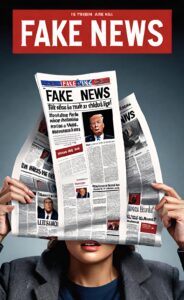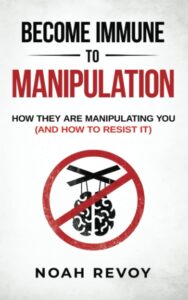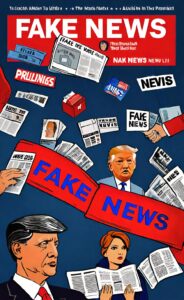Fake news has become a prevalent issue that continues to plague media outlets and manipulate the masses. The spread of false information has the power to shape public opinion, influence elections, and sow division among communities. But have you ever wondered how these fake news stories are created and disseminated?
Motivations Behind Producing Fake News
The drivers behind the creation of fake news stories are multifaceted, touching on everything from the pursuit of higher viewership figures to the desire to influence political landscapes. Additionally, certain media entities might propagate false information to advance specific political ideologies or support particular candidates, thereby wielding considerable influence over public discourse and election outcomes. This manipulation not only serves to polarize communities but also to fulfill the agendas of those in power or seeking it.
The financial incentives cannot be understated, as sensational and fabricated stories tend to attract more clicks and shares than straightforward, factual reporting. In this click-driven economy, the temptation to fabricate or exaggerate news can be overwhelming for outlets under financial pressure. The lure of viral content, regardless of its veracity, can lead to a disregard for journalistic integrity in favor of stories that promise widespread dissemination and engagement.
Furthermore, the creation of chaos and confusion is another dark motivation. By muddying the waters and blurring the lines between truth and fiction, certain players in the media landscape aim to undermine public trust in reliable sources, thereby asserting control over the narrative and shaping public perception according to their whims. This strategy of disorientation makes it challenging for individuals to discern truth, thereby increasing dependency on the very sources that deceive them.
How Media Outlets Craft Convincing Fake News Stories
Creating convincing fake news stories is an art form that hinges on the manipulation of emotions and perceptions. To fabricate news that resonates, media outlets often combine a sliver of truth with a heavy dose of sensationalism, resulting in a story that feels plausible yet is deeply misleading. These stories frequently employ clickbait headlines that provoke strong emotional responses, urging readers to engage without skepticism. The selective omission or exaggeration of facts is a common tactic, designed to steer the narrative in a direction that aligns with the outlet’s objectives.
Moreover, the use of biased framing plays a crucial role. Through this technique, stories are presented from a skewed perspective, subtly guiding readers to draw specific conclusions. Imagery and language are carefully chosen for their emotional impact, with the goal of reinforcing the outlet’s agenda. For instance, emotionally charged words and images can be used to amplify fear, anger, or sympathy, thereby making the fake narrative more compelling.
Another key strategy involves exploiting the familiarity and trust associated with known brands or individuals by fabricating quotes or attributing false actions to them. This not only lends an air of credibility to the story but also exploits the audience’s trust in those entities. Through these methods, media outlets craft stories that, while lacking in truth, are tailored to captivate and persuade, making them effective tools for manipulation. This deliberate crafting process underscores the importance of critical engagement with news sources and the need for a discerning approach to media consumption.
Role of Social Media in Amplifying Fake News
Social media platforms have become a fertile ground for the rapid spread of fake news, exacerbating its reach and impact on society. The architecture of these platforms, with their emphasis on shareability and engagement, unwittingly favors sensational and controversial content, inadvertently making it simpler for false information to proliferate.
Users, often guided by complex algorithms, find themselves exposed to an echo chamber of misleading stories that affirm their biases, further entrenching false beliefs. This virality is not just a byproduct of user behavior; it is also fueled by the design of social media networks that prioritize content likely to generate interaction, irrespective of its truthfulness.
Moreover, the speed at which information travels on these platforms means that fake news can spread worldwide before fact-checkers have the chance to debunk it, embedding misconceptions in the public psyche. Social media not only amplifies the reach of fake news but also lends it an unwarranted veneer of legitimacy, as seeing friends or family share a story can make it seem more credible.
This dynamic plays directly into the hands of those seeking to manipulate public opinion, allowing them to exploit social media’s network effects to magnify their influence. In this landscape, the role of social media as a conduit for misinformation underscores the challenges of curtailing fake news and highlights the pressing need for platforms to actively counteract its spread.
Fake News and the Manipulation of Public Opinion
Through the deliberate dissemination of fake news, media outlets have a profound ability to warp the public’s perception of reality. This manipulation extends beyond merely presenting false information—it influences attitudes, sways decision-making processes, and can even alter the course of elections and social policies. The tactics utilized to engage in this form of manipulation are sophisticated, leveraging psychological principles to tap into the human psyche. By playing on fears, biases, and desires, fake news creators craft narratives that resonate on a personal level, making them more likely to be believed and shared.
These manipulated narratives often serve to amplify divisions within society, creating echo chambers where only similar viewpoints are echoed back, reinforcing pre-existing beliefs and making individuals more susceptible to further manipulation. The impact is a polarized public, less able to engage in constructive dialogue or understand opposing viewpoints. The role of social media in this process cannot be overstated, as it provides the perfect platform for the rapid and widespread dissemination of these false narratives, reaching vast audiences with unprecedented speed.
The use of fake news to manipulate public opinion is not just a challenge to individual discernment; it represents a direct threat to democratic processes and societal cohesion. By distorting the public’s understanding of key issues, these fabricated stories undermine the foundation of informed decision-making, which is critical for a functioning society. As these narratives continue to influence public opinion, the need for critical media literacy and robust fact-checking mechanisms becomes increasingly vital to ensure the public can make decisions based on accurate information.



Dangers of False Narratives in Modern Journalism
The rise of false narratives within modern journalism represents a critical challenge to the media’s role as a pillar of democracy. These narratives not only compromise the credibility of the press but also contribute to a more fragmented society, where the truth becomes a matter of perspective rather than fact.
This erosion of trust makes it increasingly difficult for the public to engage with genuine news sources, leading to a climate where misinformation thrives unchallenged. The consequences extend beyond mere misinterpretation of facts; they disrupt the very foundation of informed public discourse, essential for the healthy functioning of any democratic society.
By undermining the public’s ability to discern truth from falsehood, false narratives jeopardize the principles of transparency and accountability that journalism seeks to uphold. In doing so, they not only mislead individuals but also impair collective decision-making processes, affecting everything from public policy to personal choices. This represents a profound danger to the societal fabric, emphasizing the need for journalism to adhere to rigorous standards of truthfulness and integrity.
Identifying and Combating Fake News
Addressing the issue of fake news is a multifaceted challenge that demands proactive involvement from both media professionals and the public at large. For media companies, this means committing to high standards of journalism that emphasize fact-based reporting, ethical sourcing, and a clear delineation between opinion and factual content. It’s imperative for these organizations to invest in rigorous fact-checking procedures and to cultivate a culture of accountability and correction of errors.
On the side of news consumers, critical thinking plays a vital role. Individuals should adopt a skeptical stance towards sensational headlines and seek out information from multiple reputable sources before forming an opinion. Learning to recognize the hallmarks of reputable journalism, such as citing credible sources and providing balanced viewpoints, is crucial. Engaging in media literacy education can further empower individuals to discern credible information from false reports. Together, through a commitment to journalistic integrity and informed skepticism, it’s possible to build resilience against the tide of fake news and ensure a well-informed populace.











